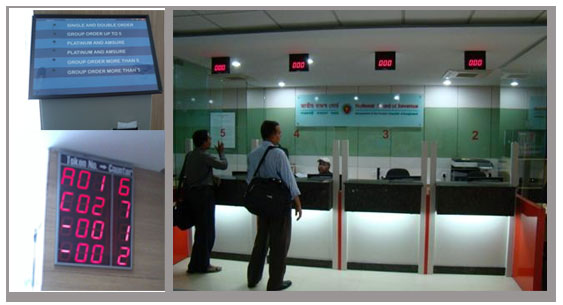To study their performance
However, in the case of coexistence with TCP, XCP recover less bandwidth because it imposes strict control on queue management solutions the rate of losses. A queue is a queue management display structure that stores the elements in an orderly and makes available only queue management solutions one of them. In this chapter, we introduced the notion of queue management as the process reached describing the arrival of customers to the queue with the time interval between successive arrivals, service process is defined function of the service.

Time according to an exponential law and the concept of Kendall that describes the system queue by a series of parameters A/ B/ n/ K/ N. Then we detailed the M/ M/ best-known system, the phenomenon of congestion and control with the XCP protocol. The simulation allows us to make visible how a queue and this fact allows us to analyze traffic flow in our network. To accomplish our queue management solutions goal, and to model traffic network we simulated the operation of expectation that are FIFO, SFQ and RED files.
Assess their results
After viewing the results we posted the queue management display graphs corresponding to each of them after which we discussed the different results. For more details see this in Section II. Subsequently, we simulated systems queue type M/ M/ and M/ M/ K. Derivatives of these rating systems Kendall admit exponential distributions of arrival and the service process. The idea was to vary the parameters are the arrival rate of the packets and the service rate in order to study the behavior of these two systems.

Finally, we boarded the XCP protocol is an example of congestion control protocol. On the Internet, which is the network of networks, all packets arriving at a router are placed in a waiting type First In First Out (FIFO) queue for stream processing. This algorithm is applicable only in the case of the presence of queue management solutions a single queue. The packets are added to the tail of the queue and the packet is at the head of that queue is processed first. However, this package management causes delay variation between the arrival of packets where multiple streams are present.
To queue management solutions congestion
In this simulation, we have two queue management display nodes (n0, n1) transmitting to the destination (n3) through the node2 (switch or router). The link that connects the nodes to each other is defined as: duplex-link$ n0$ n3 1Mb 100ms DropTail This line is used to connect the two nodes n0 and n3 avec1 Mb of bandwidth, 100 ms delay and a queue of FIFO. Saturation of the link connecting the and3 nœuds2 occurs from the time when the amount of packets sent exceeds the capacity of the link, then the queue is saturated and the packets will be rejected.

The first arrived packets are transmitted and queue management display the remaining packets are dropped. Drop Tail queue puts a certain volume of traffic and eliminates anything that overflows. It's not fair and causes re transmissions queue management solutions and will flood again congested router. Stochastic Fairness Queuing (SFQ) is a queue fair, this is a simple implementation of the algorithm's family setting fair queue.